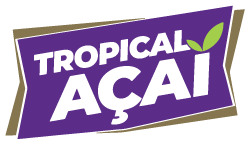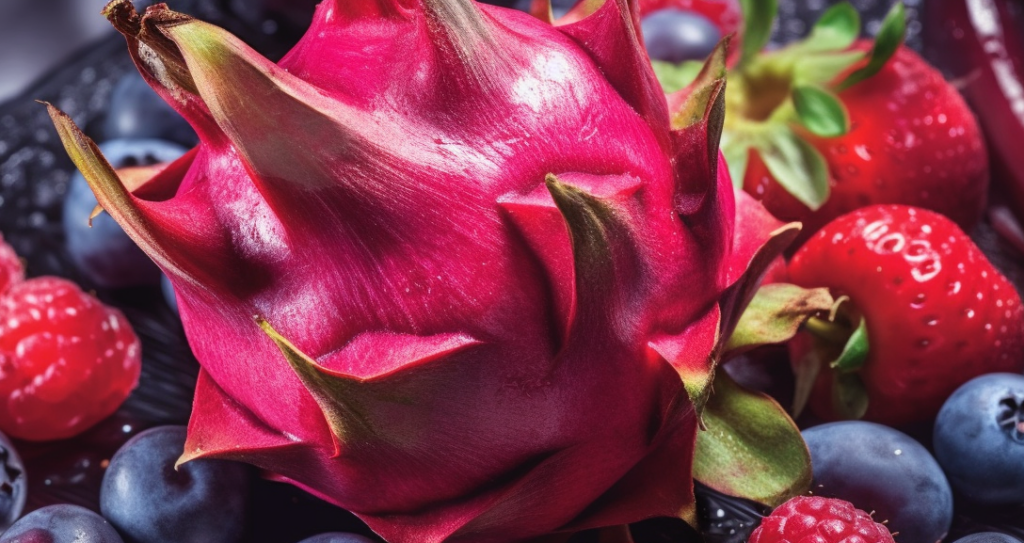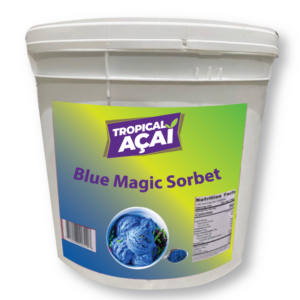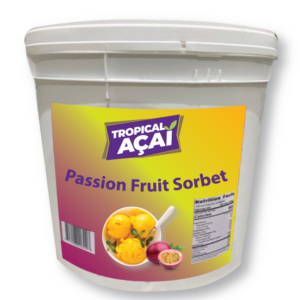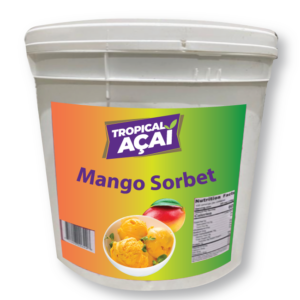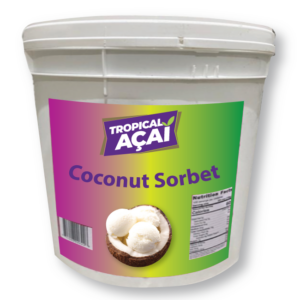Introduction
Understanding the Popularity of Acai and Pitaya
In recent years, the health and wellness community has seen a significant surge in the popularity of acai and pitaya. These exotic superfruits, native to Central and South America, have taken center stage in the diet of many health-conscious individuals thanks to their impressive nutrient profiles and health benefits. The vibrant colors and distinct flavors of these fruits also make them attractive additions to various dishes, especially in the form of health bowls.
The rise in popularity of acai and pitaya isn’t just a fad. It’s primarily driven by a growing body of scientific research validating their health benefits. Both fruits are rich in antioxidants, dietary fiber, and essential nutrients, all contributing to overall health and wellness. Moreover, they’re often marketed as weight loss aids, making them particularly attractive to those looking to shed extra pounds healthily and naturally.
Their versatility also fuels the broad appeal of acai and pitaya. They can be enjoyed in many forms – fresh, frozen, as a juice, or even in powdered form. This flexibility has increased the use of acai and pitaya in various culinary applications, from smoothies and bowls to salads and desserts, further boosting their popularity.
The Pursuit of Weight Loss and Health in the New Generation
Weight loss isn’t just about achieving a slim figure in the new generation. It’s also about embracing a healthy lifestyle that promotes overall well-being. More than ever, people seek natural and sustainable ways to manage their weight while nourishing their bodies with essential nutrients. This shift in perspective has led to an increased interest in nutrient-dense superfoods like acai and pitaya.
Acai and pitaya fit perfectly into this new paradigm. Both fruits are low in calories and high in fiber, a combination known to promote feelings of fullness and aid in weight management. Additionally, they provide a wealth of other health benefits, from boosting immunity to promoting general health, thereby aligning with the broader health goals of today’s health-conscious consumers.
The role of acai and pitaya in the new generation’s pursuit of health and weight loss isn’t limited to their nutritional benefits. These superfruits are also widely celebrated for their delicious taste, adding a touch of luxury and exotic appeal to the diet—no wonder they’ve become staple ingredients in many health-conscious kitchens worldwide.
The Fundamentals of Acai and Pitaya
The Origin and Nutritional Profile of Acai
Acai berries, hailed as the “Beauty Berry,” hail from the acai palm trees in the Amazon rainforest. The deep purple color of acai berries signifies their high antioxidant content, particularly anthocyanins, which have been linked to various health benefits, such as improved general health and enhanced cognitive function. Additionally, acai berries contain fiber, healthy fats, and essential vitamins and minerals.
One of the unique aspects of acai berries is their fat content. Unlike many other fruits, acai berries contain a significant amount of monounsaturated fats, similar to those found in olives and avocados. These fats are known to promote cardiovascular health. Furthermore, acai berries are rich in dietary fiber, aiding digestion and promoting feelings of fullness, helping in weight management.
Acai berries are also a decent source of plant-based protein, offering around 2 grams of protein per 100 grams. This, coupled with its high fiber content, makes acai a filling and satisfying addition to the diet. While the sugar content in acai is relatively low, it’s worth noting that acai products, such as juices and powders, may contain added sugars, so it’s always wise to read the labels.
The Origin and Nutritional Profile of Pitaya
Also known as dragon fruit, pitaya is a vibrant, tropical fruit native to Central America but now grown in various parts of the world. The fruit has different varieties, but the most common are white-fleshed and red-fleshed pitayas. Beyond their stunning visual appeal, pitayas are celebrated for their impressive nutrient profile.
Pitayas are exceptionally high in fiber, which aids digestion and promotes feelings of fullness. They’re also a good source of antioxidants, particularly vitamin C, which supports immunity and promotes skin health. Furthermore, pitayas offer a decent amount of magnesium, a mineral essential for many bodily processes, including nerve function and muscle contraction.
Interestingly, pitayas are also one of the few fruits that contain iron. Iron is crucial for various bodily functions, including the production of red blood cells. Additionally, pitayas have a low calorie and low-fat content, making them an ideal food for those aiming to lose or maintain a healthy weight. Like acai, pitaya also comes in various forms, including fresh, frozen, and powdered, offering versatility.
Acai and Pitaya: A Comparison of Nutritional Facts
Both acai and pitaya boast impressive nutritional profiles but have distinct differences. Acai berries are higher in healthy fats and protein, while pitaya tends to be lower in calories and fat. However, both fruits are high in dietary fiber, which is essential for weight management and overall health.
Regarding antioxidant content, acai berries edge out pitaya thanks to their rich anthocyanin content. However, pitaya is no slouch either, providing a good dose of vitamin C, a potent antioxidant. Regarding minerals, pitaya offers more magnesium and iron, while acai berries give a more comprehensive range of essential nutrients.
In essence, acai and pitaya have unique strengths, making them worthy additions to a healthy diet. Choosing between them can depend on one’s specific dietary needs and preferences. However, there’s no need to choose – incorporating both fruits into your diet can offer a broader range of nutrients and health benefits.
Acai and Pitaya in Weight Loss
How Acai Supports Weight Loss
Acai berries are often marketed as a superfood that supports weight loss, and there’s scientific evidence to back this up. The fiber content in acai berries can help curb appetite by promoting feelings of fullness, which can naturally lead to a lower caloric intake. Moreover, the monounsaturated fats in acai berries could help regulate lipid and glucose metabolism, aiding in weight management.
The antioxidants in acai berries, particularly anthocyanins, may also play a role in weight management. Research suggests anthocyanins could have anti-obesity effects and help reduce body fat. However, it’s important to note that more research is needed to understand acai berries’ potential weight loss benefits fully.
Finally, the protein content in acai berries could also aid in weight loss. Protein promotes satiety and helps maintain muscle mass, which can contribute to a higher metabolic rate. However, as with any food or supplement, acai berries alone are unlikely to cause significant weight loss. Instead, they should be incorporated into a balanced diet and healthy lifestyle for best results.
How Pitaya Supports Weight Loss
Pitaya, like acai, contains several properties that could support weight loss. First and foremost, pitaya is low in calories and high in fiber. The fiber content not only aids digestion but also helps control hunger by creating a feeling of fullness, which can help reduce overall caloric intake.
The antioxidants in pitaya, especially vitamin C, could also support weight loss. Some studies suggest that vitamin C status is inversely related to body mass. Individuals with adequate vitamin C status oxidize 30% more fat during moderate exercise than individuals with low vitamin C status, thus potentially aiding in weight loss.
Moreover, the magnesium in pitaya could contribute to weight loss efforts. Some research indicates that adequate magnesium intake might benefit weight loss and insulin resistance. However, as with acai, pitaya should not be seen as a magic weight loss solution. Instead, it should be part of a balanced diet and healthy lifestyle.
Comparing the Weight Loss Benefits of Acai and Pitaya
When it comes to weight loss, both acai, and pitaya have their merits. Acai’s high fiber, protein, and healthy fats content can help control hunger and maintain lean muscle mass, while pitaya’s low-calorie and high-fiber content can assist in calorie control. Both fruits also offer antioxidants that may indirectly support weight loss.
While both fruits can contribute to a weight loss diet, it’s essential to note that they should not be relied upon as the sole strategy for losing weight. A balanced diet combined with regular physical activity is the most effective and sustainable approach to weight loss. Adding acai and pitaya to a well-rounded diet can provide extra nutritional benefits and add variety to meals.
Unveiling the Health Benefits of Acai and Pitaya Beyond Weight Loss
Acai: A Treasure Trove of Health Benefits Beyond Weight Control
While acai is renowned for its potential to support weight loss, the health benefits of this potent berry extend far beyond this. Acai berries are packed with antioxidants, notably anthocyanins, critical in combatting oxidative stress. Oxidative stress is associated with various chronic diseases, including cancer and other disease. Therefore, the antioxidants in acai could potentially contribute to overall health and disease prevention.
Moreover, acai berries are an excellent source of healthy fats, particularly omega-3 fatty acids, known for their beneficial effects on brain health. These fats are integral for cognitive function and mood regulation, thus potentially improving mental well-being-.
Additionally, acai berries offer significant amounts of dietary fiber. This fiber serves as a prebiotic, providing nourishment for beneficial gut bacteria. A healthy gut microbiota contributes to improved digestion and a more robust immune system, signifying acai’s potential role in gut health and immunity.
Pitaya: A Multifaceted Superfood with Wide-Ranging Health Benefits
Like acai, pitaya, or dragon fruit, it offers various health benefits beyond its role in weight control. Pitaya is a powerhouse of vitamin C, a potent antioxidant crucial in boosting immunity. By helping combat harmful free radicals, vitamin C contributes to overall health and disease prevention.
Pitaya is also known for its gut health-promoting benefits. It is rich in dietary fiber, which aids digestion and gives a feeling of fullness, supporting weight control. Moreover, the prebiotic properties of pitaya support the growth of beneficial gut bacteria, further enhancing digestive health.
Finally, pitaya is high in magnesium, a vital mineral in various bodily functions, including nerve function, muscle contraction, and maintaining a regular general health. Studies suggest magnesium may also support general health by helping maintain healthy blood pressure.
Incorporating Acai and Pitaya into Your Diet: A Practical Approach
Finding Quality Acai and Pitaya Products in Stores
Quality is critical when shopping for acai and pitaya products. Look for products listing acai or pitaya as the first ingredient to ensure you get the most benefits. Be wary of products that contain added sugars or preservatives, as they can diminish the nutritional value of these superfruits.
In the case of acai, it’s commonly available in three forms: frozen puree, powder, and juice. Frozen acai puree is often the best choice as it retains most nutrients and is free from added sugars. Acai powder can be a good option for adding to smoothies or bowls, but check to ensure it’s made from pure acai with no added ingredients. Acai juice can be delicious and convenient but watch out for added sugars.
Pitaya is commonly available in fresh form, frozen cubes, or pitaya powder. When choosing fresh pitaya, look for bright, even-colored skin that yields slightly to pressure. A frozen pitaya is a convenient option for smoothies and bowls, while pitaya powder can be a versatile addition to various recipes. As with acai, check the ingredients and avoid products with added sugars or preservatives.
Storing Acai and Pitaya for Maximum Freshness and Quality
Storing acai and pitaya correctly is crucial to maintain their freshness and nutritional value. If you’re buying frozen acai or pitaya, keep it in the freezer and consume it by the expiry date on the package.
Fresh pitaya should be stored in the refrigerator and consumed within a week. If you’ve cut the pitaya, cover it with cling wrap or store it in an airtight container to prevent it from drying out. Acai is rarely available fresh due to its short shelf life, so it’s typically consumed in frozen, powdered, or juiced form.
Using Acai and Pitaya in Diverse Recipes
Acai and pitaya are versatile fruits that can be incorporated into various recipes. Acai bowls and pitaya bowls are classic ways to enjoy these superfruits. But don’t stop there – add acai or pitaya to your smoothies, juices, yogurt, oatmeal, or cocktails for an antioxidant boost.
Acai powder can be sprinkled onto salads or mixed into salad dressings for a unique twist. Pitaya can add color and flavor to salsas or fruit salads. Remember, the key is to experiment and find ways to include these superfruits into your diet that suit your taste and dietary needs.
Delicious Acai Recipes for a Nutritious Diet
Creating a Classic Acai Bowl with Frozen Acai Packs
Frozen acai packs can be incredibly convenient when crafting a classic acai bowl. Blend these packs with a splash of your preferred liquid, such as almond milk or coconut water. For toppings, the world is your oyster. You can add granola, fresh fruits, and even a little honey for some added sweetness.
Whipping Up an Acai Berry Smoothie with Acai Blender Cubes
Acai blender cubes simplify the process of adding acai to your smoothies. Mix these cubes with a ripe banana, fresh spinach, and almond milk. The result is a nutrient-rich, delicious acai berry smoothie perfect for breakfast or a midday snack.
Innovative Acai Berry Overnight Oats with Premium Acai Sorbet
Add a spin to your traditional overnight oats by incorporating premium acai sorbet. This ingredient infuses your oats with a delightful, fruity flavor, not to mention an antioxidant boost. Finish off with a sprinkle of your favorite berries and nuts for extra crunch and nutrients.
Pitaya Recipes That Pack a Healthful Punch
Creating a Vibrant Pitaya Bowl with Frozen Pitaya Packs
Starting your day with a vibrant pitaya bowl is like serving yourself a slice of sunshine. Use a frozen pitaya pack as your base, blending it with a ripe banana and a splash of coconut water. For toppings, consider fresh fruits, seeds, or granola for a mix of textures and flavors.
Refreshing Pitaya Smoothie Using Pitaya Blender Cubes
Pitaya blender cubes offer a convenient way to add pitaya to your smoothies. Combine the cubes with a cup of juicy pineapple chunks, orange juice, and a spoonful of Greek yogurt. You’ll get a rejuvenating pitaya smoothie that’s as pleasing to the palate as it is to the eyes.
Pitaya Chia Pudding Enhanced with Premium Pitaya Sorbet
Combine chia seeds with your choice of milk to create a basic chia pudding. Give this pudding a zesty twist by adding a scoop of premium pitaya sorbet. This adds a dash of refreshing fruitiness to your pudding.
Combining Acai and Pitaya in Your Meals
Acai and Pitaya Smoothie Blend for a Nutrient-Rich Treat
Incorporate both acai and pitaya into your diet with a vibrant smoothie blend. Mix acai and pitaya blender cubes with a ripe banana, a handful of spinach, and almond milk. The resulting smoothie is a colorful, nutrient-packed treat perfect for any time of the day.
Mixed Superfruit Bowl with Acai and Pitaya for a Healthful Breakfast
Kickstart your day with a nutrient-dense mixed superfruit bowl. Start with a frozen acai or pitaya pack as your base, and use the other fruit as a topping. You can add other fresh fruits, seeds, or granola for extra flavor and texture.
Acai and Pitaya Layered Parfait for a Guilt-Free Dessert
Create a visually striking, nutritionally balanced dessert using premium acai and pitaya sorbet. Alternate layers of each sorbet with granola and fresh fruits to create an acai and pitaya layered parfait. This makes a great breakfast or a refreshing dessert, all while being good for your health.
Acai and Pitaya from a Business Perspective: Market Analysis and Trends
Market Analysis: The Growing Demand for Acai and Pitaya
The global superfood market has grown substantially over recent years, and acai and pitaya have emerged as key players. Consumer awareness about the health benefits of these fruits, coupled with their rising popularity in health-conscious food trends, has spurred increased demand.
Acai’s market growth can be attributed to its high nutritional value and versatility. Its presence is growing in multiple sectors, from acai bowls in breakfast cafes to acai-infused skincare products. The global acai berry market size is projected to continue its upward trajectory, propelled by increasing consumer demand for health-enhancing natural food products.
Similarly, with its eye-catching color and myriad health benefits, pitaya is carving a niche in the superfood market. It is being utilized in various products, from frozen fruit packets to nutritional supplements and beauty products. The pitaya market’s future looks promising, with expectations of continued growth as consumers seek out novel, health-promoting foods.
Understanding the Trends: How Acai and Pitaya are Transforming the Health Food Industry
Acai and pitaya are at the forefront of the trend toward health-conscious eating. These superfruits have gained significant popularity, particularly among younger consumers increasingly interested in nutritious, natural foods promoting health and well-being.
Acai and pitaya bowls are trendy menu items in cafes and restaurants, often touted for their Instagram-worthy aesthetics and nutritional value. There’s also a growing trend of using acai and pitaya in beauty and wellness products, with these fruits being recognized for their antioxidant properties that can benefit skin health.
Furthermore, with the rising popularity of plant-based diets, acai, and pitaya offer excellent plant-based sources of nutrients and are being increasingly incorporated into vegetarian and vegan meal plans.
Commercial Aspects of Acai and Pitaya: Opportunities and Challenges
While the acai and pitaya markets present immense opportunities, there are also challenges. One of the critical challenges is sourcing high-quality, sustainable acai and pitaya. Maintaining sustainable farming practices and ensuring fair Trade becomes increasingly important as demand grows.
Furthermore, educating consumers about the health benefits of acai and pitaya while ensuring that claims are scientifically substantiated is crucial. Misleading health claims can lead to consumer mistrust and potential regulatory issues.
However, the opportunities outweigh the challenges. Businesses can leverage the growing consumer interest in these superfruits by offering innovative acai and pitaya-based products. By staying abreast of market trends, prioritizing quality and sustainability, and marketing effectively, businesses can tap into the immense potential of the acai and pitaya markets.
Understanding the Quality and Certification Aspects of Acai and Pitaya
Quality Indicators for Acai and Pitaya
When it comes to selecting acai and pitaya products, quality is a crucial factor. For acai, look for products that contain no added sugars, colorings, or preservatives. Check that acai is listed as the first ingredient. Ideally, the product should be certified organic, meaning it was grown without synthetic pesticides and fertilizers.
For pitaya, quality indicators include vibrant color and a fresh, mild aroma. If you’re purchasing fresh pitaya, the fruit should be firm to the touch but yield slightly to pressure. Like acai, look for certified organic pitaya products free from added sugars and artificial preservatives.
The Importance of Certifications for Acai and Pitaya Products
Certifications can assure the quality and safety of acai and pitaya products. Some standard certificates to look for include organic, Fair Trade, and Non-GMO.
- Organic Certification: This certifies that the product was grown without synthetic pesticides and fertilizers and with practices that promote biodiversity.
- Fair Trade Certification: This means that the farmers and workers involved in the production were paid reasonable prices and wages, worked in safe conditions, and used sustainable farming practices.
- Non-GMO Certification: This certifies that the product does not contain genetically modified organisms (GMOs).
Understanding the Impact of Quality and Certifications on Consumer Choices
In today’s health-conscious society, many consumers are willing to pay a premium for high-quality, certified acai and pitaya products. These consumers often perceive such products as safer, more nutritious, and more environmentally friendly.
Certifications like organic and Fair Trade can influence consumer buying decisions, as they assure the product’s quality and the company’s ethical standards. Similarly, consumers increasingly seek Non-GMO products due to concerns about GMOs’ potential health and environmental impacts.
Frequently Asked Questions About Acai and Pitaya
1. What is the best time to consume acai or pitaya for weight loss?
There’s no ‘best’ time to consume acai or pitaya for weight loss. These superfruits can be incorporated into your diet at any time of the day. However, destroying them in the morning can provide a nutrient-rich start to the day and help maintain satiety, potentially aiding in weight management.
2. Can I consume acai and pitaya daily?
Yes, you can consume acai and pitaya daily as a balanced diet. They are nutrient-dense and low in calories, making them a healthy choice for daily consumption. However, as with all foods, consuming them in moderation is essential as part of a varied diet.
3. Can I eat acai and pitaya if I have diabetes?
Acai and pitaya can be part of a diabetes-friendly diet. However, they should be consumed in moderation due to their natural sugar content. Always opt for products without added sugars, and consider consulting your healthcare provider or a dietitian for personalized advice.
4. Is it safe to consume acai and pitaya during pregnancy?
Generally, acai and pitaya are safe to consume during pregnancy. They are high in essential nutrients that can benefit both the mother and the baby. However, due to the potential risk of foodborne illnesses, it’s recommended to consume pasteurized or thoroughly washed products. Always consult your healthcare provider if you have any concerns.
5. How can I ensure the quality of acai and pitaya products in my store?
Ensure that you source your acai and pitaya products from reputable suppliers who can provide quality and safety certifications. Look for products with no added sugars, preservatives, or artificial colors. Regularly check the storage conditions and expiry dates of the products.
6. What is the shelf life of acai and pitaya products?
The shelf life of acai and pitaya products depends on the product type and storage conditions. Frozen acai and pitaya can last up to a year in the freezer. If you’re using fresh pitaya, it’s best consumed within a week of purchasing. Always check the product’s expiry date and store it as per the instructions on the packaging.
7. Can acai and pitaya cause any allergies?
While it’s rare, some people may be allergic to acai or pitaya. If you’re trying these fruits for the first time, start with a small amount to see how your body reacts. If you experience any allergic symptoms, stop consumption immediately and consult a healthcare provider.
8. Can acai and pitaya interact with any medications?
Acai and pitaya are generally safe to consume and do not commonly interact with medications. However, if you are on any medication and have concerns, it’s best to consult your healthcare provider before incorporating new foods into your diet.
9. Can I give acai and pitaya to my kids?
Yes, acai and pitaya are safe and healthy choices for children. They are rich in vitamins and antioxidants, promoting overall health. However, as with any food, gradually introduce them into your child’s diet and monitor for potential allergic reactions.
10. Can I consume acai and pitaya on a keto diet?
While acai and pitaya are low in calories and rich in nutrients, they contain natural sugars. If you’re on a strict keto diet, it’s best to consume these fruits in moderation and count the carbs towards your daily limit.
Conclusion
Acai and Pitaya: A Healthy Addition to Your Weight Loss Journey
In conclusion, acai and pitaya are excellent additions to your weight loss journey. Not only do they have potential weight management benefits, but they also provide a host of other health advantages. Incorporating these superfruits into your diet can offer a delicious and nutritious way to support your health and well-being.
Acai and Pitaya: Valuable Players in the Health Food Market
From a business perspective, the acai and pitaya markets offer immense potential. As consumer awareness about the health benefits of these fruits grows, so does the demand for quality acai and pitaya products. Businesses delivering high-quality, certified products while staying abreast of market trends stand to gain significantly.
